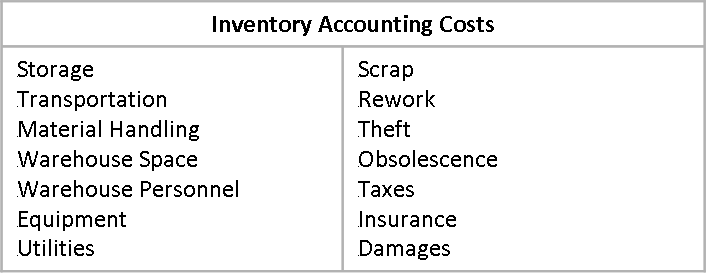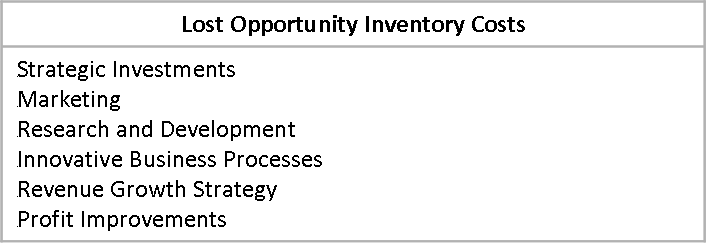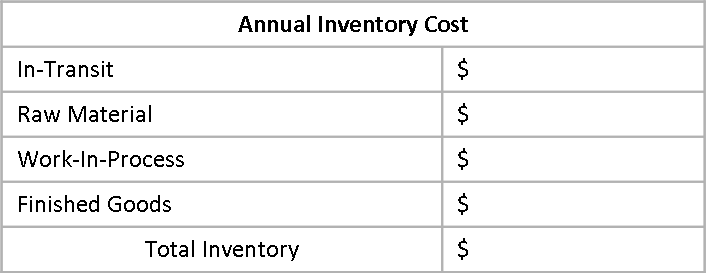In Topic 3. Process Speed we closed with the thought that slow processes are wasteful processes. And slow processes lead to excess inventory. Even though accountants label inventory on the Balance Sheet as an asset, don’t be fooled. Don’t think that you can go to the Inventory Bank and pull out your money with interest. For every dollar on the books you won’t be able to get a dollar in hand.
For this post on Inventory we’ll begin with this assertion; less inventory will reduce cost and improve profit. I’m not advocating zero inventory, companies have to hold an amount of inventory that will allow them operate effectively. But we need to understand why we hold the amount of inventory that we do.
What is the cost of inventory?
First let’s look at the cost on the books.
Next let’s look at the costs that don’t aren’t outlays of cash. We can think of this as Lost Opportunity Costs. By putting money into inventory, that money is no longer available to grow revenue.
Large inventories are a giant cash flow leak that needs to be plugged in order to free up cash for investment in revenue growth activities.
One of the main obstacles to inventory reduction is the mistaken idea that more effective inventory management is all that is needed to get inventory to competitive levels. However; the actual causes of excess inventory are inefficient business processes that create excess inventories in the first place.
Whatever problem an organization is having, it starts with the Leadership Team. The reason for that is that the Leadership Team determines the culture. After all; culture is the collective set of behaviors of the Leadership Team.
If the executives of an organization look for someone to blame when problems occur, then rarely will a proper look be given to the business processes. In order to develop a high performance organization the Leadership Team has to create a culture of; blame the process first, not the person.
Okay, I’m getting off my soapbox now.
Let me ask the following questions.
- How much in-transit inventory do you carry per year in dollars?
- How much raw material inventory do you carry per year in dollars?
- How much work-in-process inventory do you carry per year in dollars?
- How much finished goods inventory do you carry per year in dollars?
Complete the following table:
We’ll use these costs in a later post when we calculate available funds for self-financing revenue growth activities.
In the next post of the Business Performance Measurement Series; I will discuss Topic 5. Quality. High quality processes have low variation and low quality processes have high variation. Processes with a lot of variation are slow processes. We can see variation in all parts of the business; product development, service development, customer service, order fulfillment, procedures, raw materials, lead times, and cycle times.



